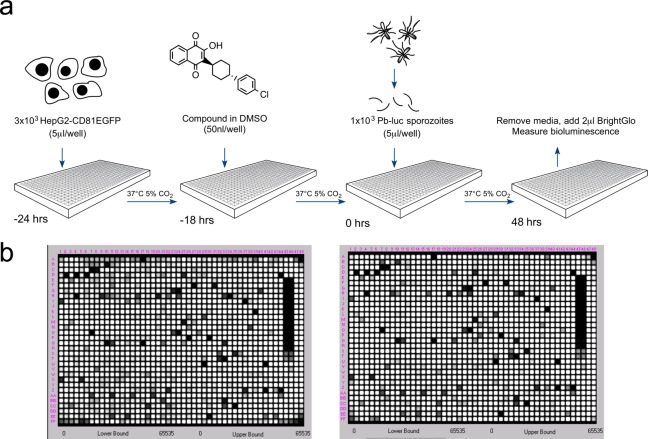Figure 1.
Luciferase-based high-throughput screening assay to identify malaria exoerythrocytic-stage inhibitors. (a) Assay workflow. Twenty-four hours prior to infection, 3 × 103 HepG2-A16-CD81EGFP cells in 5 μL media were added to wells in a 1536-well assay plate. Then 1–4 h later, 50 nL of compound dissolved in DMSO was added to the wells. At the time of infection, Pb-Luc sporozoites were freshly prepared from infected A. stephensi mosquitoes and diluted to a concentration of 1 × 103 in 5 μL media per well. After 48 h, Pb-Luc growth within hepatocytes was measured by bioluminescence. (b) As a proof of concept, we screened two plates containing 2816 natural compounds (GNF) in replicate. One set of replicates is shown here. The average Z factor for these plates was 0.82.

